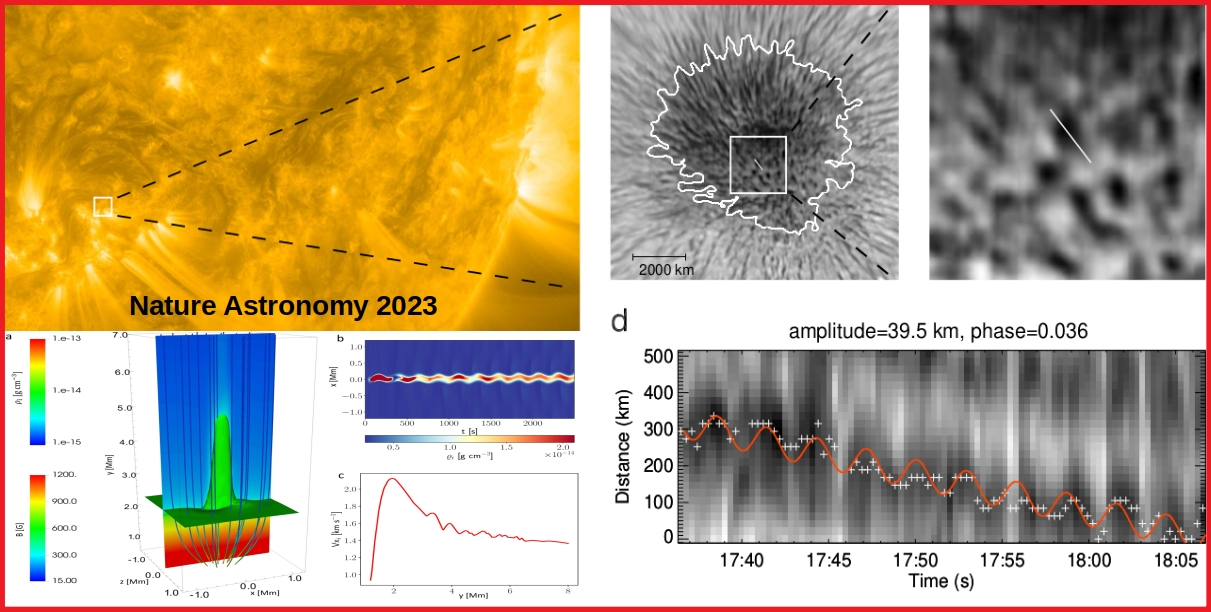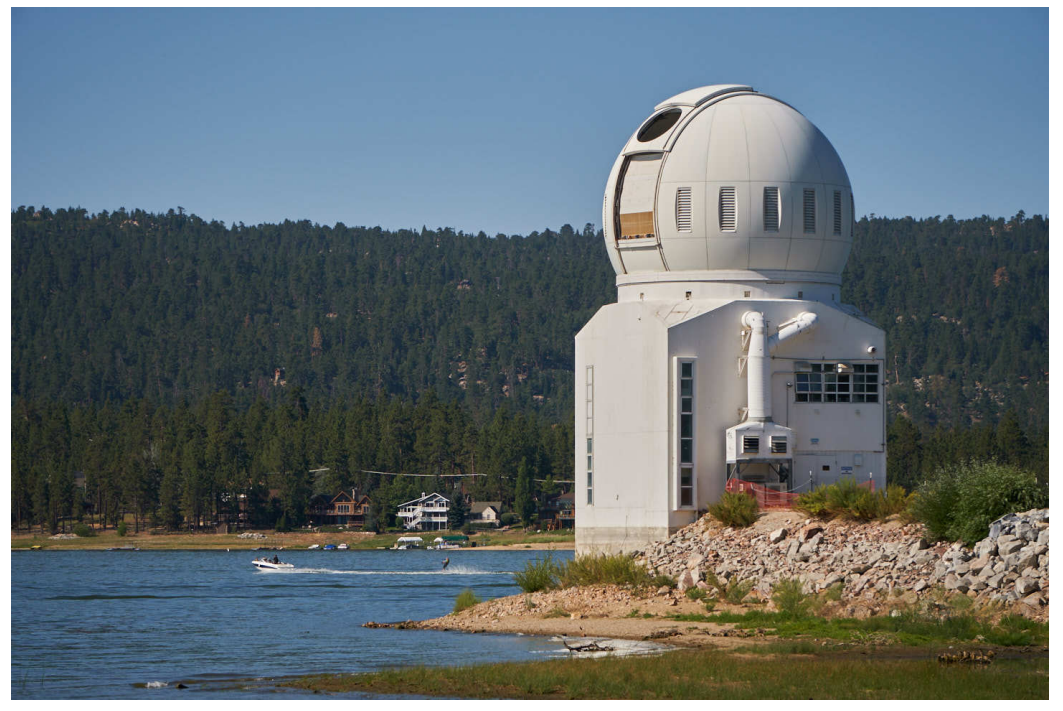The Sun is powered by nuclear fusion of hydrogen at the core, where the temperature reaches 16,000,000 degrees Celsius. At the visible surface (or the photosphere) of the Sun the temperature drops to about 5,000 degrees Celsius. It is intuitive that the hydrogen gas located further away from its core should be cooler. The corona is more distant from the core than the photosphere, but its temperature reaches millions of degrees. No current theory could explain this counter-intuitive example. This is called the coronal heating problem which consists a century-long challenge to physicists.

Mosaic of the Scientific Result
Using the world's largest solar telescope, the 1.6 m Goode Solar Telescope at the Big Bear Solar Observatory, an international science team detected numerous dark features in a big sunspot, which appears as the coldest structure of the sun. These dark features are plasma fibrils aligned with a strong magnetic field at kilo-Gauss at the sunspot. The fibrils oscillate transversely, which means this is a kink MHD wave and they are able to drag the kilo-Gauss magnetic field lines to move laterally. It implies that the fibril kink oscillations could potentially provide a very strong energy flux. The science team has developed a mathematical model of fast kink waves in sunspots and estimated that the energy flux is 1000 to 10000 times stronger than energy losses in active region plasma. This is sufficient to maintain the atmosphere of the Sun at million degrees Kelvin temperature.

Goode Solar Telescope at Big Bear Solar Observatory
This novel scientific result accompanied by a first-ever high-resolution view of the sunspot umbra, and high energy wave dynamics in its plasma fibrils are published in the prestigious journal, Nature Astronomy, on 25th May, 2023. The solar physicist at the Harbin Institute of Technology, Shenzhen, China, Dr. Yuan Ding led this investigation along with an international scientific team who played a significant role in framing the scientific works. Dr. Błażej Kuźma and Prof. Krzysztof Murawski from Institute of Physics, University of M. Curie-Skłodowska performed the numerical simulations of the observed events. This new scientific discovery changes the view of the strongly magnetized plasma region on the Sun as it was never seen before, and it will play a significant role in solving the long-standing coronal heating problem. It will also be an outstanding scientific result for the next generation solar telescopes and a ready reference to the laboratory plasma experiments where scientists are trying to confine the plasma and generate green energy for the benefit of mankind.

The representative multi-wavelength image of Sun
The paper entitled Transverse oscillations and an energy source in a strongly magnetized sunspot, is published online in Nature Astronomy on 25 May 2023 at 16:00 (London time). The DOI number for this paper is 10.1038/s41550-023-01973-3.
